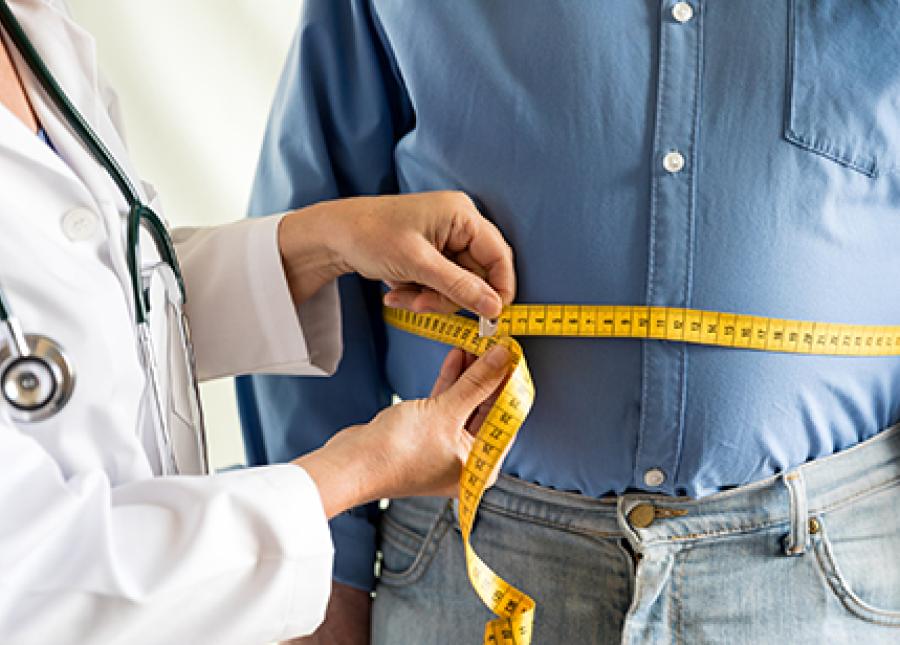A larger than ideal waist isn't just less than ideal for your clothes. It has health risks that you may not have thought about.
First, what's less than ideal?
A waist circumference of greater than 40 inches for men and greater than 35 inches for women is "considered elevated and indicative of increased cardiometabolic (heart disease-related) risk," said Craig Peters, DO, an HonorHealth cardiologist. "Elevated waist circumference or waistline measurement is an indication of abdominal obesity and increased risk for heart disease, diabetes, high blood pressure, dyslipidemia (elevation of blood cholesterol, triglycerides or both) and nonalcoholic fatty liver disease."
Cancer risk relative to waist measurement has an even lower threshold. Terri Taylor, an HonorHealth registered dietitian, said a waist circumference of more than 31.5 inches in women or more than 37 inches in men could raise the risk for colorectal, prostate, breast and other cancers. Every inch above those measurements can increase your risk for colorectal cancer specifically by 5%, Taylor said.
"What we call belly fat is known to be metabolically active," she said, "meaning that it produces pro-inflammatory hormones that can lead to chronic inflammation in the body. This inflammation is a major risk factor for cancer."
Start with Body Mass Index
Body Mass Index, a fairly reliable method of estimating body fat levels based on weight and height measurement, "is the first step to determine how overweight or obese someone is," Dr. Peters said. "Measurement of waist circumference in conjunction with BMI can provide additional information on risk to determine if patients have abdominal obesity. It's not recommended to measure waist circumference in patients with a BMI of 35 or more, as almost all individuals with this BMI also have an abnormal waist circumference."
Why isn't BMI sufficient for determining heart disease and cancer risk? "Both measurements can complement each other," Dr. Peters explained. "BMI may overestimate obesity in individuals who are overweight but very muscular and underestimate it in older persons because of the loss of muscle mass associated with older age."
Why waist measurement is getting attention
A recent study conducted by researchers from the France-based International Agency for Research on Cancer and other academic institutions in Europe and the U.S. found that for every 4 inches in waist circumference, the overall risk for one of 10 types of obesity-related cancers increases by 13%. For colorectal cancer, the risk is higher—by 22%.
The study used data from several European studies of more than 43,000 adults who were, on average, 63 years old. The study considered a number of factors known to cause cancer, such as smoking.
The Agency noted that both body mass and where body fat is carried can be good indicators of obesity-related cancer risk.
Taylor pointed out how simple waist measurement can be used as a guide to health. "Waist circumference is an easy way to keep track of how you're doing," she said. "You can tell whether your pants feel tight, loose or just right around your waist, and it's a visual reminder of what an optimal waist measurement looks and feels like."
The road to a smaller waist
"Counting calories to lose weight or waist circumference is hard to sustain, and food quality is just as important as the calorie content," Taylor said. "Smaller portions of refined carbs, processed fats, sugary foods and beverages will help you maintain a healthy weight and decrease belly fat and waist circumference to lower disease risk."
